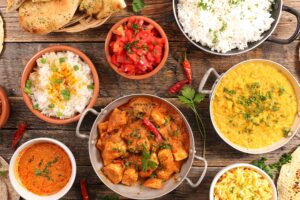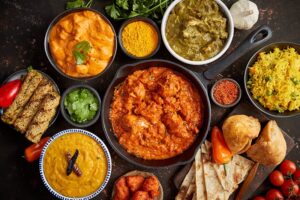Spices have captivated humanity for centuries, transcending their initial role as flavor enhancers to become cultural and economic powerhouses. Their journey through history is intertwined with trade, exploration, and the exchange of ideas, connecting civilizations and enriching cuisines across the globe. From the dawn of civilization, spice routes served as vital pathways linking South Asia to distant lands, acting as arteries through which cinnamon, pepper, cardamom, and other valuable commodities were transported. These routes not only broadened the palates of diverse societies but also fostered cultural unity through a shared appreciation for flavor and aroma.
The Impact of Spice Routes in South Asia
South Asia played a pivotal role in the development of spice routes. These intricate networks linked the region to markets as far as the Mediterranean, facilitating the exchange of spices, textiles, and other luxury goods. Cinnamon, pepper, and cardamom were particularly prized for their unique properties and became symbols of affluence and power. Beyond commerce, these exchanges enriched cultural practices, inspiring culinary traditions that blended diverse flavors and techniques
Cinnamon: The Queen of Spices
Cinnamon, renowned for its sweet, warm aroma, has been cherished for centuries. Beyond its culinary uses in desserts, stews, and beverages, ancient cultures valued cinnamon for its medicinal properties. The spice was so prized that it served as currency in trade and even played a role in ancient Egyptian embalming rituals, underscoring its revered status.
Pepper: The King of Spices
Pepper, often referred to as “black gold,” was one of the most sought-after spices in history. Its bold flavor and perceived medicinal benefits made it indispensable in kitchens and apothecaries alike. The demand for pepper spurred exploration and colonization, as European powers sought to control its trade. Its significance extended beyond flavor, symbolizing wealth and power in the ancient and medieval worlds.
Cardamom: The Aromatic Treasure
Cardamom, with its sweet, floral notes, has been a staple in global kitchens for centuries. Beyond its culinary appeal, it was revered for its medicinal and aromatic properties. Ancient Egyptians used cardamom in perfumes and incense, while traders often treated it as a luxury item equivalent to currency.
A Legacy of Global Flavors
The ancient spice routes transformed the world’s culinary landscape, introducing exotic flavors to new regions and inspiring gastronomic innovation. Spices elevated dishes, symbolized wealth, and influenced global trade. Today, their legacy endures in diverse cuisines, where the flavors of cinnamon, pepper, and cardamom continue to delight palates worldwide.
Read More: Best Indian Food in Dallas
Conclusion: Reliving the Spice Route Experience
The ancient spice routes have left an indelible mark on history, uniting cultures and shaping the global culinary heritage we celebrate today. These historic pathways remind us of the profound impact that flavors can have on fostering connections and enriching our lives.
If you’re inspired to experience the authentic flavors of South Asia, visit Usmania Dallas. Here, the time-honored legacy of spices is celebrated in every dish, offering a taste of tradition and a journey through history. Indulge in the rich heritage of flavors that have brought communities together for centuries!









